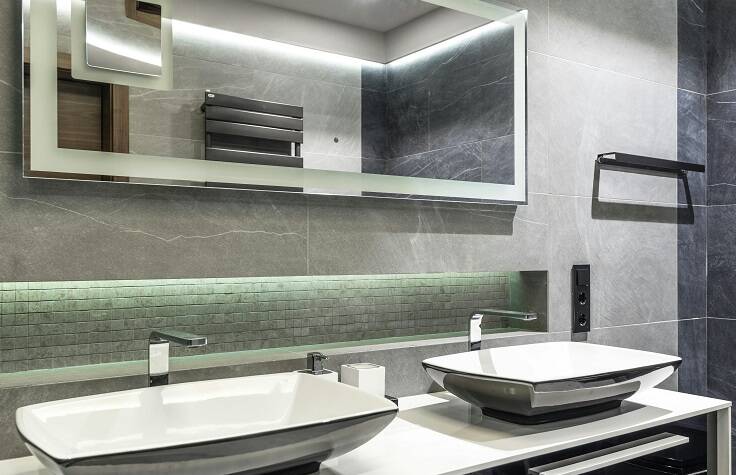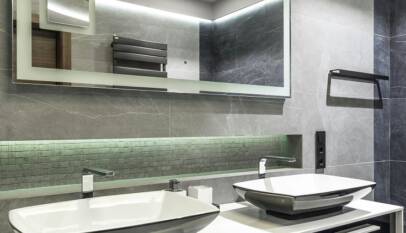
Bathroom remodeling services can transform a mundane bathroom into a functional and aesthetically pleasing space. Investing in these services not only enhances the home’s value but also improves daily comfort and efficiency. Whether aiming for a modern update or simply seeking repairs, these improvements can significantly impact the user experience.
Many homeowners often overlook the potential of their bathrooms, viewing them merely as utilitarian spaces. The right remodeling services can elevate the entire look and feel of a home while also increasing its market appeal. Simple changes, such as new fixtures or improved lighting, can make a substantial difference.
Choosing the right bathroom remodeling service involves considering various factors, including design preferences, budget, and the specific needs of the household. Working with experienced professionals ensures that the entire process runs smoothly, from initial design to final touches. This guidance can ultimately lead to a beautifully remodeled bathroom that meets both aesthetic and functional demands.
Planning Your Bathroom Remodel
Planning a bathroom remodel requires careful consideration of various factors. A successful project begins with evaluating space constraints and concludes with acquiring necessary permits. Attention to budget, design, and material selection is also essential for a smooth process.
Evaluating Space and Layout
Assessing the current bathroom space is vital. She or he should measure dimensions accurately and consider the existing plumbing layout.
Creating a functional layout may involve relocating fixtures such as the toilet or the sink. A common approach is to create a floor plan that optimizes flow.
Look for ways to maximize storage as well. Built-in shelves or vertical storage solutions can help when space is limited. Final decisions should enhance ease of use while accommodating personal needs.
Setting a Budget
Establishing a realistic budget is crucial. An effective budget includes all aspects, such as labor, materials, and potential unexpected costs. A typical range can be between $5,000 to $25,000, depending on the scope of the remodel.
Prioritize expenses based on what is most important. Allocating funds to areas like high-quality fixtures or flooring can impact the overall durability and aesthetics.
It’s wise to set aside at least 10-20% of the budget for contingencies. This approach helps in avoiding financial strain during the project.
Choosing a Design Style
Selecting a design style significantly influences the outcome of the remodeling project. Styles range from traditional and modern to minimalist or farmhouse.
Research trends and create a mood board with color swatches, tile samples, and images to visualize the desired aesthetic.
Consider functionality alongside style. For instance, a luxurious spa-like design requires careful selection of durable materials that can withstand humidity.
Incorporating personal touches ensures the final space reflects individual tastes and preferences.
Selecting Materials and Fixtures
Choosing materials and fixtures demands attention to quality and practicality. He or she should consider water-resistant materials to prevent mold and damage.
Key components include:
- Countertops: Options like quartz or granite offer durability.
- Flooring: Porcelain tiles or luxury vinyl are popular for moisture resistance.
- Fixtures: Select high-efficiency faucets and showerheads to save water.
Comparing brands, prices, and warranties is essential for informed decision-making. Mixing styles within chosen materials can create a personalized look while maintaining coherence.
Obtaining Permits and Approvals
Most bathroom remodels require permits, especially for structural changes or electrical work. Local building codes will dictate what is necessary.
He or she should research local regulations early in the planning process. Engaging with a contractor familiar with these requirements can streamline this phase.
Having approved plans ensures compliance and may prevent costly fines or the need for rework. It also provides peace of mind, facilitating a smoother project completion.
Understanding local laws creates a solid foundation for the remodeling process.
Executing the Remodel
Executing a bathroom remodel requires careful planning and execution. Key components include hiring the right professionals, establishing a clear timeline, managing the installation process, and ensuring quality control throughout.
Hiring Contractors
Choosing the right contractors is crucial. Homeowners should look for licensed and insured professionals with extensive experience in bathroom remodeling. Online reviews and referrals can provide insight into a contractor’s reputation.
It is important to conduct interviews and request detailed estimates from multiple contractors. This helps in understanding the scope of services offered and the projected costs. Clear communication regarding expectations, deadlines, and payment schedules is vital for a successful partnership.
Having a contract in place that outlines all terms can prevent misunderstandings later. This should include project specifications, timelines, and contingencies for unexpected issues.
Timeline and Project Management
Establishing a realistic timeline is essential for any remodel. A typical bathroom renovation may take anywhere from a few weeks to several months, depending on the project’s complexity and size.
Developing a project management plan involves setting key milestones and deadlines. Homeowners should stay in close contact with contractors for progress updates and any necessary adjustments to the schedule.
It’s also beneficial to build in buffer time to accommodate potential delays. Factors such as material availability or unexpected structural issues can impact the timeline and should be considered.
Installation Process
The installation process usually follows a systematic approach. It begins with demolition, where old fixtures, tiles, and countertops are removed. Proper disposal methods should be utilized to minimize waste.
Next, plumbing and electrical work are completed according to local codes. This stage is crucial, as it ensures the safety and functionality of the new bathroom.
Once the rough-in work is done, the installation of new fixtures, cabinetry, and finishes begins. Attention to detail ensures that the overall design vision is realized. Regular check-ins with contractors during this phase help maintain standards and address any issues promptly.
Quality Control and Inspection
Quality control is a significant aspect of the remodel. Homeowners should schedule inspections at various stages to ensure compliance with local building codes and standards.
Conducting walkthroughs with contractors helps identify any defects or areas that might require adjustments. Focus should be on the installation of plumbing fixtures, electrical systems, and finished surfaces.
Final inspections ensure that everything meets expectations before project completion. It is advisable to maintain open lines of communication for addressing any post-completion issues or warranty claims. This diligence contributes to the longevity and satisfaction of the remodeled space.
Copper Mining Stock: Insights and Trends for Investors
Investors are increasingly looking towards copper mining stocks as a strategic opportunity…









